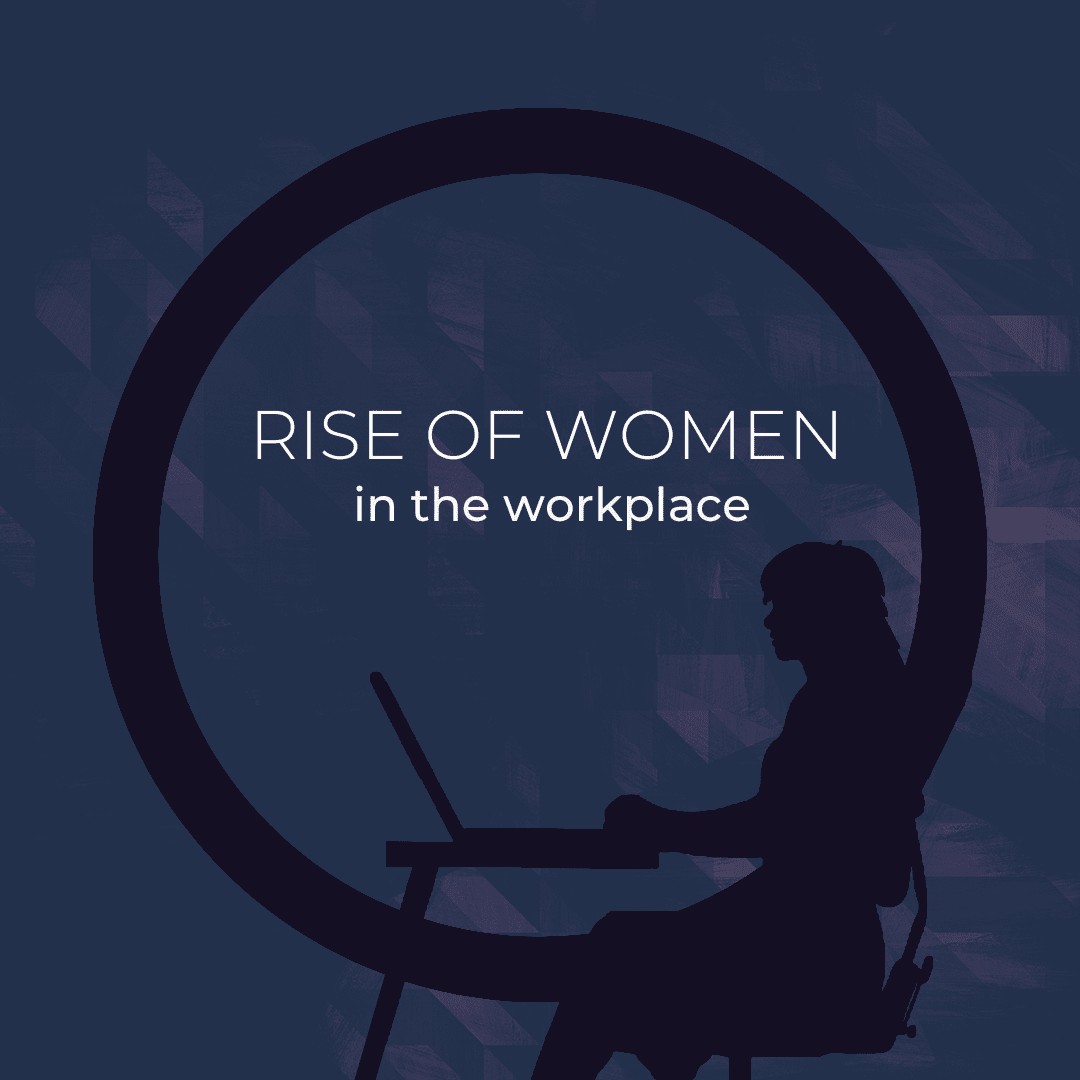Overview:
- Women in the workplace face several challenges by virtue of their gender.
- Empowering women in the workplace can increase overall profit in an organization.
- Breaking down barriers that restrict women in the workplace can help them unlock their true potential.
Women in the Workplace
Women’s participation in the workforce has been on the rise since the industrial revolution, particularly during the 20th century. However, they were forced to take up low paying, low status jobs due to their limited access to higher education. This practice continued for a major part of the 19th and 20th centuries.
Throughout the history of women in the workplace, be it the suffragette movement and feminist movements in the later parts of the 20th century heralded women’s participation in the workforce. They took up space in previously male dominated domains which resulted in various challenges. Gender biases and stereotypes hindered career developments for women. Later parts of the 20th century saw women taking up increased amounts of high paying, long term careers.

Although women are more ambitious than ever, women’s representation in the global workforce is yet to achieve true gender parity. Statistics from the United Nations, 2023 suggest that form 62% of the global workforce and men, 93% of it. In addition to bridging the gender gap in the workplace, intersectional differences and leadership opportunities should also be taken into consideration.
This includes their race, ethnicity, sexuality among other factors. Research reveals disappointing data about discrimination faced by Black, Latina, Asian, LGBTQIA+ and disabled/differently abled female employees compared to white, European, straight or abled women in the workplace. However, despite these setbacks, women have persevered and continue to pave the way for women to enter workplaces.
Challenges Faced by Women in the Workplace
Women’s participation in the workplace has undoubtedly improved over the years. However studies suggest there are various challenges that persist despite all these advancements, which makes it tougher to break barriers for women still. Female employees face discrimination in every step of their career; be it hiring, promotions, raises, employee benefits or even delegation of responsibilities.
Women are more likely to be perceived by virtue of their appearances and not their skills or talents. They are more likely to be unfairly compensated compared to men for the same amount of work or effort. Female employees are grossly underrepresented in leadership or managerial positions.
Despite forming half of the global workforce, women occupy only a negligible fraction of top positions according to US GAO. Studies suggest that women are more likely to have their judgment questioned or be mistaken for a low profile employee.
Additionally, working women also experience what is commonly referred to as “double burden”(or double duty, double day). It is the (often forced) dual responsibility of managing both household duties and professional expectations. Women who perform paid labor in a professional setting come back home to be met with unpaid labor like childcare, caregiving, cleaning and cooking duties.
This practice can be traced back to the societal expectations on women to become the ideal wife or mother. Even if a woman were to work, society demands that she prioritize household responsibilities over her career. Women shoulder these responsibilities and tend to become exhausted, mentally and physically, which often forces them to quit their careers. This disproportionate delegation of responsibilities in the household also affects women’s ability to pursue career, network or leadership opportunities.
Empowerment of Working Women
The World Bank’s report titled Gender at Work: Emerging Messages suggests certain solutions to address challenges faced by women in the workplace. In order to overcome these gender biases, one needs to understand challenges that are region and culture specific.
1. Eliminating Legal and Formal Barriers for Women Entering Workplaces
Women face multiple restrictions when it comes to entering workplaces. The disproportionate amount of household work and unequal status of women in family dynamics. Reforms should be brought in inheritance laws as well as customary laws. All these measures ensure that women have equal opportunities in entering workplaces.
2. Involve the Private Sector in Promoting Gender Equality
In countries like Egypt, Finland, France, Brazil and Japan, the private sector accounts for the majority of the jobs. There have been an increased number of companies recruiting women in managerial positions as well as male dominated industries. However, only 2% of employers across 42 countries have reported adopting women friendly hiring practices.

3. Engage Entrepreneurial Initiatives to Provide Women with Economic Opportunities
By increasing women’s access to capital, agency, networks, markets, business training they can enter the entrepreneurial field and employ themselves.
4. Remove Constraints in Every Stage of Women’s Life to Ensure Sustainable Impact
Any woman faces multiple constraints throughout the entirety of her life: starting from childhood to her old age. Setbacks during childhood can be resolved by increasing proximity to schools, incentives for admitting girls to schools and vocational training. Companies can better accommodate their female employees’ needs by providing sufficient maternity, and paternity leave and affordable daycare. During the elderly years, government bodies can ensure social protection and provision of pensions.
Impact of Women in the Workplace
Women in the workplace enrich the working environment with their diverse perspectives and unique leadership styles. It is observed that women thrive in the workplace by cultivating an inclusive environment which in terms fosters creativity and innovation leading to better solutions that outperform homogenous groups. Women taking up leadership roles also helps in the organization making mindful decisions that are more inclusive and thoughtful. Women participating in the workforce equally also challenges gender roles and stereotypes which aids societal progress in the long run.
Statistics suggest that women participating equally in the workforce can have tremendous implications for the global gross domestic product. This will raise GDP by more than 20%, doubling the global growth rate over the coming decade. McKinsey’s study suggests if gender parity were realized, 12 trillion dollars would be added to the global economy. World Bank’s research shows that about half of women’s productive potential is left unutilized.

The Way Forward
The journey of women in the workplace has been one of resilience and determination. Although strides have been made towards gender equality in the workplace, we still have a long way to go. With trends such as remote work and automation, women have better opportunities to thrive in workplaces. It is also important to focus on intersectionalities within working women. Instead of seeing them as a single homogenous group- recognize different identities. These identities shape unique experiences in working women and inculcate these differences to advance gender equality in the workplace. It’s only together that we can break down barriers that restrict women from realizing their true potential in the workplace. Let’s pave the way for more equitable and inclusive workplace environments in the future.
FAQs:
How Important are Women in the Workplace?
A study done by McKinsey has suggested how having a gender-diverse workforce can be beneficial to the company’s growth by increasing the overall productivity by 25%. There is an influx of creativity and productivity which also leads to higher performance in the workplace.
What is the Role of Women in Employment?
Women’s participation in the workforce increases not only the National Economic Output, but it also helps in lowering the labor costs in various industries.
What is the Representation of Women in the Workplace?
According to Qualtrics, the world average of women in the workforce is 39.49%. In India, according to the Periodic Labour Force Survey (PLFS), 2023, women’s participation in the workforce in India is 37%.


